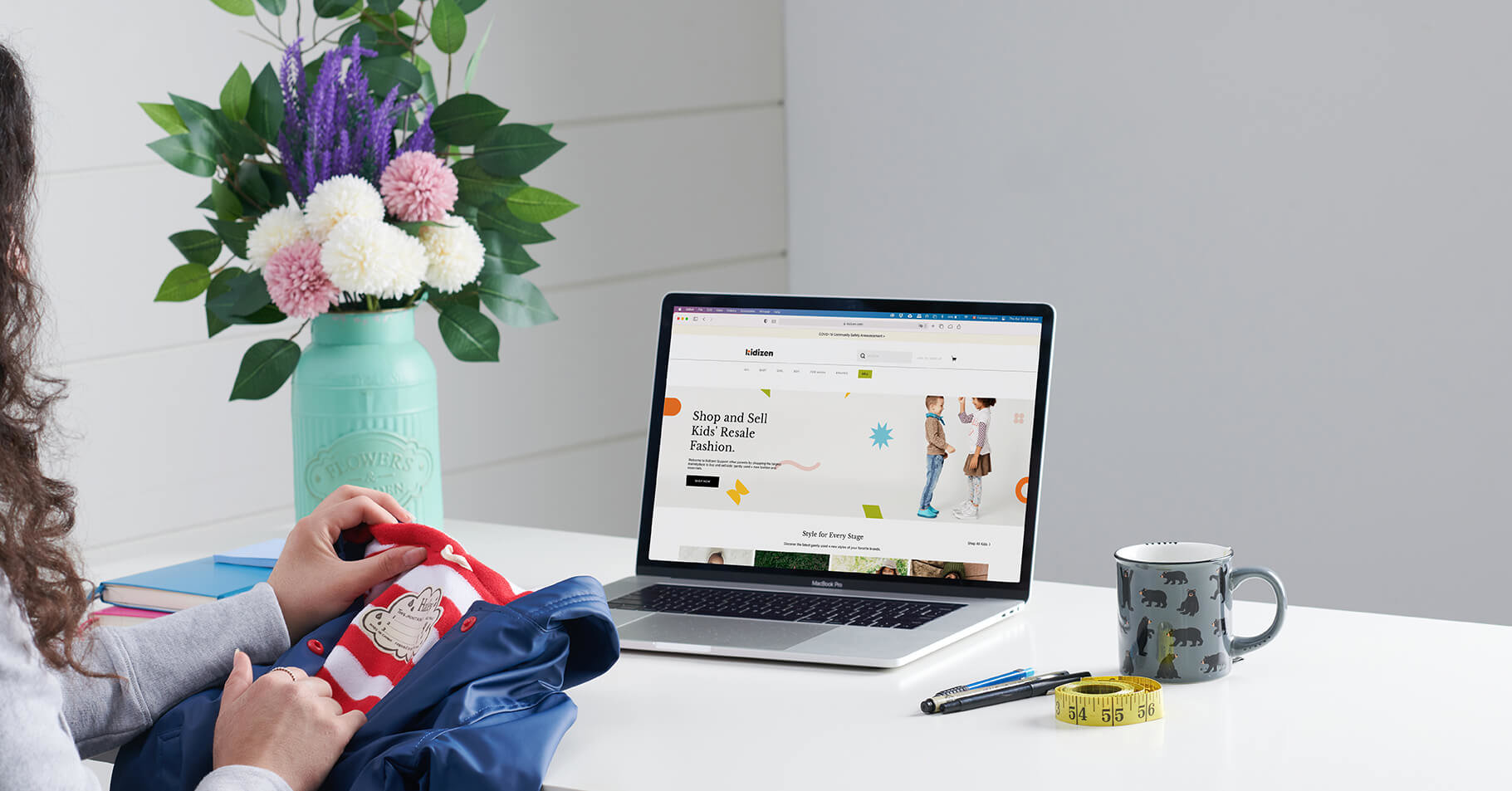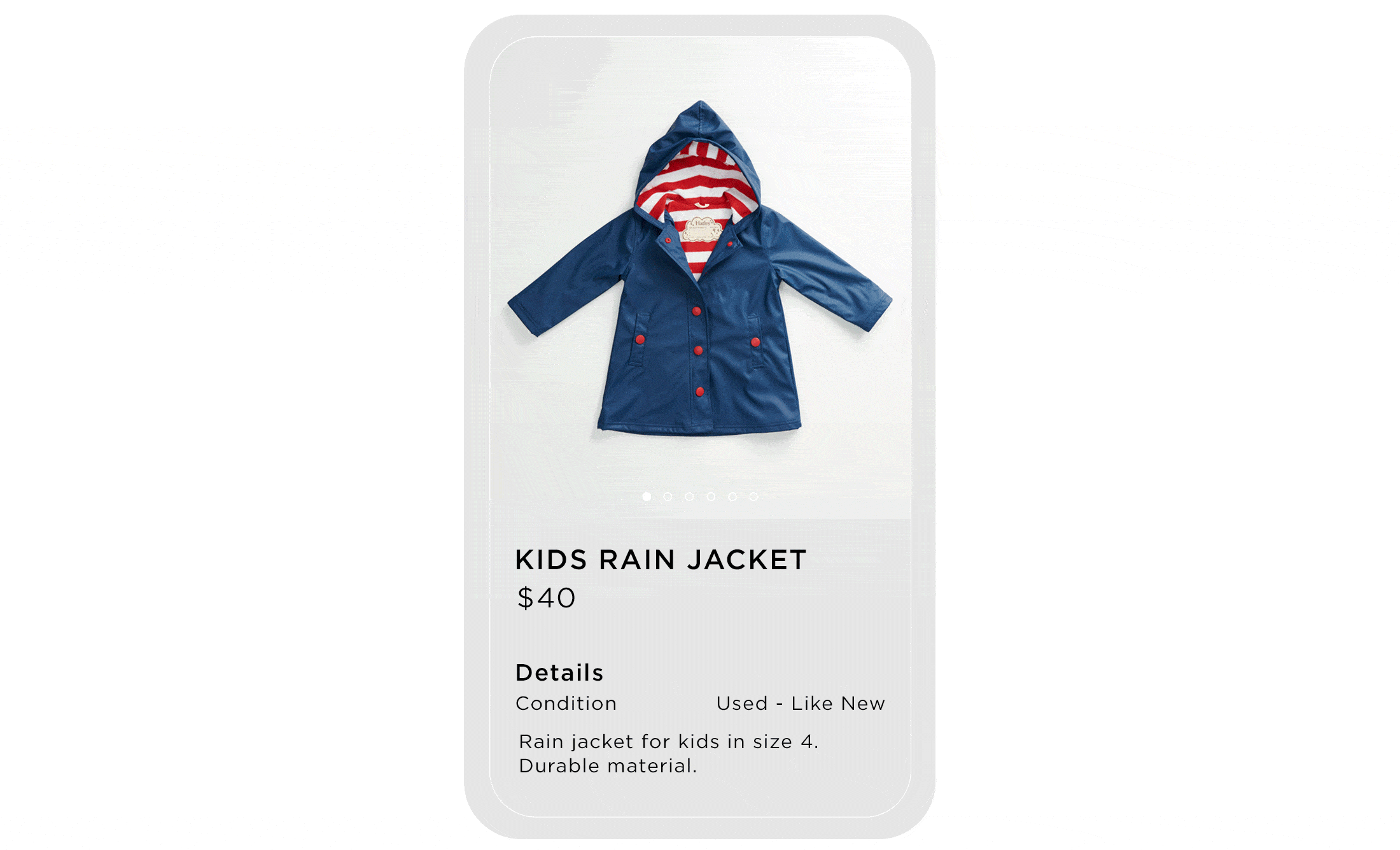STYLE — SECOND HAND CLOTHING
Reselling: A whole new world
by Sarah Kossits

When you clean out your child’s clothes or when they’re going through a growth spurt, keeping up with how much clothing they have and how much they’ll need can quickly become overwhelming. While the easiest thing to do is to drop them in a donation bin, one of the best things you can do is to resell them yourself. Though resale isn’t quite as simple as making a bag to drop off, it’s one of the best ways to truly guarantee that the clothes will get a second life.
Dori Graff & Mary Fallon launched Kidizen, an online resale platform in the United States, out of their own need as parents and from them being shocked by the sheer number of things children need. The co-founders were hoping to create a more sustainable option than buying everything new, and Kidizen was also a way for them to tap into their communal wealth since their families (and therefore their hand-me-down networks) lived far away.
“We were constantly having to manage it all, whether we needed to buy the next size or get rid of the stuff that we were no longer using. It was kind of like this new chore that we didn’t have prior,” explained Graff.
Since the site’s launch in 2014, Kidizen has grown into a thriving online community with items for every stage of a child’s life and for mom, too.
“I think quality is number one and that's what our users are seeking.”
However, not all clothes have a big resale market. Many brands are either extremely hard to sell or won’t sell at all. When asked what makes a garment sell on her site, Graff was quick to speak about quality.
“I think quality is number one and that’s what our users are seeking,” said Graff. “They understand the importance of maybe spending a little bit more money upfront on getting something that’s high quality that will last because it holds its resale value, whereas buying something that’s more fast fashion, doesn’t. Parents really like high quality, 100% cotton, they like organic. The materials they’re putting on their kids is important [to them],” she explained.
If you want to start reselling your child’s used clothes, you have options—you can sell them to consignment stores, use sites like Kidizen, or resell it on places like Facebook Marketplace or in designated resale Facebook groups.
As Graff points out, resale has always been big on Facebook, even prior to the existence of Marketplace.
“There was no payment process, [Facebook] was not built in any form for e-commerce,” she said. “Yet parents were choosing to conduct their transactions on Facebook in these groups. People don’t love the idea of buying from a stranger on eBay, but they like doing it with other moms on Facebook.”
According to participants in the Hatley Buy Sell Trade Facebook group, the reasons for joining resale groups are numerous. For Erika Marie, it was three-fold.
“[I joined for] the ability to recoup some of what I spent in order to apply those funds towards new purchases, to save money buying second hand and for the environmental benefits of buying used,” she said.
For Grace Wilcox, her big reasons for joining were to look for older lines of boutique products and because of a lack of product availability overall.
“Availability of product in Canada generally seems to be an issue. A lot of companies still won’t ship to Canada, or won’t do so cost effectively, so I’m happy to buy pre-loved. Even community Facebook auction sites are huge and thriving, and I belong to some in my city that have 20,000-24,000 members! I love it. It makes it easy to both buy and sell.”
If you’re new to the resale game, there are some things you can do to help your items sell. Per Graff, photography plays a major role.
“From newborn to age five, most kids grow so fast they don’t get a chance to wear out their clothes, so they’re still perfectly good and have no business being in a landfill.”
“I think when you’re selling second hand, photography is important. I would use a plain white background so that your shop looks nice and everything is sort of consistent. Taking multiple photos [helps] so that you can use the photography as a great way to describe the condition or show if there are any sort of flaws,” she added.
She also explained that having multiple listings will increase the likelihood of sales since it makes people feel more comfortable buying from you. Listing frequently is also important, since you’ll have items at the top of the feed and be more discoverable.
When buying online for her family, Marie backs up Graff’s sentiment.
“[I look for] good, clear photos, and an accurate description of condition. The price also needs to be appropriate for the item, its condition and include fees & shipping costs.”
For Wilcox, one of the main things she looks for is quality.
“High quality items generally retain their value, so if my kids can wear something and I can sell it afterwards, I consider it a win,” she explained. “I look for quality brands that I know and trust (or that others trust and rave about) and I like my items to be in excellent used condition.”
On the flip side, if you’re looking to buy for the first time, Graff recommends simply asking questions if you have any concerns at all.
“[This is] especially true when it comes to things like fit. If you’re unsure of whether it’s true to size or small, make sure you ask those questions. If your family has pet allergies, make sure that the person you’re buying from doesn’t have animals,” she explained. “If there’s things that are important to you, like pet hair or what detergent they wash things in, ask questions.”

Unfortunately, before resale can become the most common way to get (and get rid of) children’s clothing, society must work through the stigma that still surrounds buying second hand. “I think there’s a small amount of stigma about buying used, that it means you’re (embarrassingly) frugal or poor. Neither of those are bad things, and not even necessarily true,” explained Marie. “I think it’ll take some clever, widespread marketing. From newborn to age five, most kids grow so fast they don’t get a chance to wear out their clothes, so they’re still perfectly good and have no business being in a landfill.”
For Graff, she believes that the stigma will only continue to fade with new generations of moms.
“The stigma is going slowly, but it is going away,” she said. “I think what you’re finding particularly with younger generations of parents who totally embraced resale for themselves, is that they’re more likely to do the same for their kids. In fact, it’s a badge of honor in many ways. Making good, smart and responsible decisions about what they’re purchasing for their family is really important and I think that second hand is a part of that. We’re doing this so that a future generation of people have a better planet.”
As for how to help break the stigma, Graff says that normalizing second hand should be a priority, though doing so for first time parents can be difficult.
“I think that buying new earlier for your children is something that happens a lot. There’s this need when you’re having your first child. You want everything to be perfect. The perfect nursery, perfect clothes, and so there is a desire to accumulate a lot of new stuff but then that goes away, and [you see] the reality of what happens,” she said with a laugh. “By your second child you’re like “oh yeah, no problem, that’s second hand.””
Though there’s still some stigma to work through and though reselling takes more effort than simply making a bag, it’s one of the best ways to clear your child’s used clothing and to find more for their growth spurts to come.
“Extending the life of the things that we wear is the number one most environmentally responsible option because you can’t guarantee when you donate. You can’t guarantee when you donate to your friends […] so often it’s not the right season or it’s not their kids’ style and then they end up throwing it out,” said Graff. “Reselling is a really great way to make sure that it makes it into somebody else’s hands because by placing a value on it, you know that the person is going to use it because they want it, they’re paying for it.”


